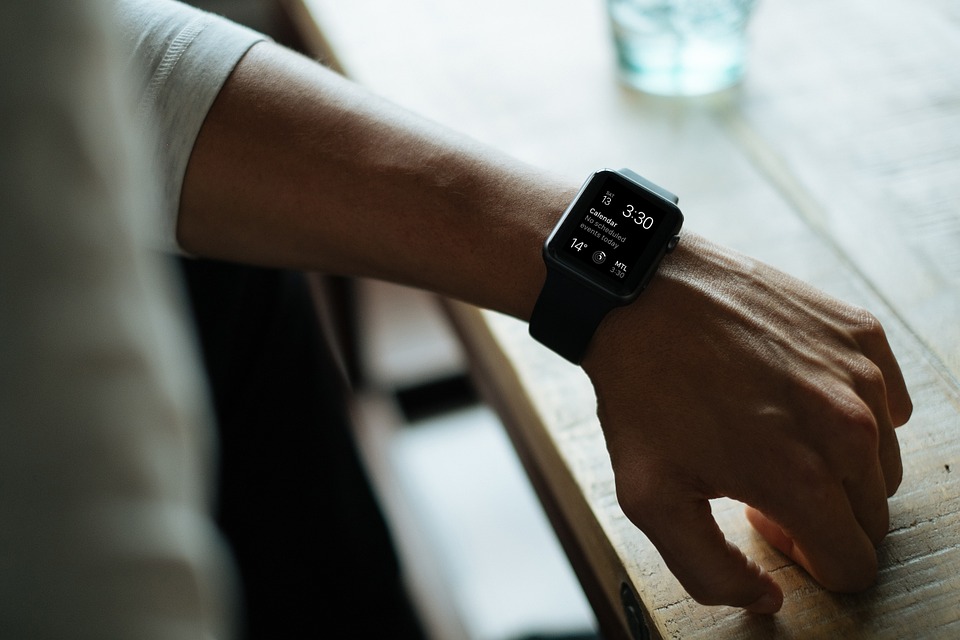Shipments of Garmin soared 324.2% on an annualized basis, up to 600 thousand pieces. In sales terms, the company took second place after Apple. The growth was driven by advent of Connect IQ technology, bestseller Fenix Chronos and health-oriented fitness and GPS-devices. Samsung slipped to the third place; the manufacturer’s deliveries rose by 9%, to 400 thousand pieces. Niche product Clock Gear S2, equipped with independent cell module, enjoyed particular interest. 2017th will show if Apple will be able to keep the lead in the market, or surrender under pressure of other iOS-compatible gadgets.
Sports trackers
High rates of growth put Garmin on the fourth place in the world in terms of total production of wrist devices (fitness tracker and smart hours). The manufacturer was outstripped by Fitbit, Xiaomi and Apple, in that order. In addition, Garmin and Fitbit try to conquer their own niches in the sports market, and increase their competitive advantage in relation to other manufacturers such as Xiaomi (low-cost trackers) and Apple (expensive watches). In II quarter of 2016, shipments of Garmin wearables jumped by 106.7% yoy to 1.6 million. At the same time, Fitbit’s sales increased only by 28.7%, to 5.7 million. Garmin sells a wide range of products for specific purposes, for example, for swimming, golf and jogging. The company encourages developers to create applications for Connect IQ store, thus empowering its devices. On the other hand, Fitbit’s range of health and fitness devices is quite narrow.
Cheap trackers
The main share of Fitbit’s revenue currently comes from sale of expensive Blaze, Alta and Charge. Probably, the company realizes that the market is being quickly saturated with cheap novelties like Xiaomi Mi Band, cost about $ 15.
Fitbit keeps receiving significant revenue from sale of Flex 2 ($ 100). In 2017, however, their share could be reduced in favor of cheap competitors, unless there is a significant increase in corporate wellness programs that provide wholesale orders. That is why Fitbit, Garmin and other manufacturers are striving to find their own niche in the sports market. Otherwise, they will be crushed by influx of cheap watches and fitness trackers.
According to IDC forecasts, total supply of portable devices, including fitness trackers, smart watches, smart glasses and clothes will reach 213.6 million by 2020. The company expects that watches and trackers will occupy the biggest share, although popularity of glasses and clothes will increase as consumers will develop a taste to devices of this type.
The main problem of all manufacturers is low interest in wearable devices. Smartphones owners do not see any point in buying smart watches that display notifications and work with crippled versions of their favorite applications. Many modern smartphones enable their owners to count steps and heart rate (via the camera's sensor) as accurately as most fitness trackers do. In addition, popularity of wrist devices is limited by high costs and privacy concerns.
source: fool.com
Sports trackers
High rates of growth put Garmin on the fourth place in the world in terms of total production of wrist devices (fitness tracker and smart hours). The manufacturer was outstripped by Fitbit, Xiaomi and Apple, in that order. In addition, Garmin and Fitbit try to conquer their own niches in the sports market, and increase their competitive advantage in relation to other manufacturers such as Xiaomi (low-cost trackers) and Apple (expensive watches). In II quarter of 2016, shipments of Garmin wearables jumped by 106.7% yoy to 1.6 million. At the same time, Fitbit’s sales increased only by 28.7%, to 5.7 million. Garmin sells a wide range of products for specific purposes, for example, for swimming, golf and jogging. The company encourages developers to create applications for Connect IQ store, thus empowering its devices. On the other hand, Fitbit’s range of health and fitness devices is quite narrow.
Cheap trackers
The main share of Fitbit’s revenue currently comes from sale of expensive Blaze, Alta and Charge. Probably, the company realizes that the market is being quickly saturated with cheap novelties like Xiaomi Mi Band, cost about $ 15.
Fitbit keeps receiving significant revenue from sale of Flex 2 ($ 100). In 2017, however, their share could be reduced in favor of cheap competitors, unless there is a significant increase in corporate wellness programs that provide wholesale orders. That is why Fitbit, Garmin and other manufacturers are striving to find their own niche in the sports market. Otherwise, they will be crushed by influx of cheap watches and fitness trackers.
According to IDC forecasts, total supply of portable devices, including fitness trackers, smart watches, smart glasses and clothes will reach 213.6 million by 2020. The company expects that watches and trackers will occupy the biggest share, although popularity of glasses and clothes will increase as consumers will develop a taste to devices of this type.
The main problem of all manufacturers is low interest in wearable devices. Smartphones owners do not see any point in buying smart watches that display notifications and work with crippled versions of their favorite applications. Many modern smartphones enable their owners to count steps and heart rate (via the camera's sensor) as accurately as most fitness trackers do. In addition, popularity of wrist devices is limited by high costs and privacy concerns.
source: fool.com



















